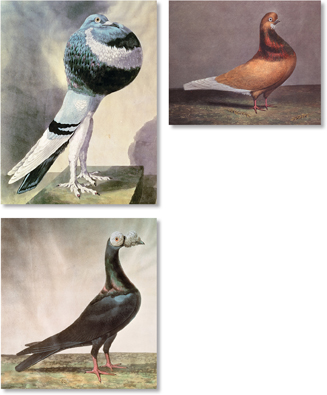
FIGURE 16–8 Artificial Selection Darwin used artificial selection in breeding fancy pigeons at his home outside London.
Farmers would select for breeding only trees that produced the largest fruit or cows that produced the most milk. Over time, this selective breeding would produce more trees with even bigger fruit and cows that gave even more milk. Darwin called this process artificial selection.  In artificial selection, nature provides the variations, and humans select those they find useful. Darwin put artificial selection to the test by raising and breeding plants and fancy pigeon varieties, like those in Figure 16–8.
In artificial selection, nature provides the variations, and humans select those they find useful. Darwin put artificial selection to the test by raising and breeding plants and fancy pigeon varieties, like those in Figure 16–8.
Darwin had no idea how heredity worked or what caused heritable variation. But he did know that variation occurs in wild species as well as in domesticated plants and animals. Before Darwin, scientists thought variations among individuals in nature were simply minor defects. Darwin's breakthrough was in recognizing that natural variation was very important because it provided the raw material for evolution. Darwin had all the information he needed. His scientific explanation for evolution was now formed—and when it was published, it would change the way people understood the living world.
16.2 Assessment

-
Review What were Hutton's and Lyell's ideas about the age of Earth and the processes that shape the planet?
Apply Concepts How would Hutton and Lyell explain the formation of the Grand Canyon?
-
Review What is an acquired characteristic? What role did Lamarck think acquired characteristics played in evolution?
Evaluate What parts of Lamarck's hypotheses have been proved wrong? What did Lamarck get right?
-
Review According to Malthus, what factors limit human population growth?
Draw Conclusions How did Malthus influence Darwin?
-
Review What is artificial selection?
Infer Could artificial selection occur without inherited variation? Explain your answer.
WRITE ABOUT SCIENCE
Imagine you are Thomas Malthus and the year is 1798. Write a newspaper article that explains your ideas about the impact of a growing population on society and the environment.

Table of Contents
- Formulas and Equations
- Applying Formulas and Equations
- Mean, Median, and Mode
- Estimation
- Using Measurements in Calculations
- Effects of Measurement Errors
- Accuracy
- Precision
- Comparing Accuracy and Precision
- Significant Figures
- Calculating With Significant Figures
- Scientific Notation
- Calculating With Scientific Notation
- Dimensional Analysis
- Applying Dimensional Analysis




